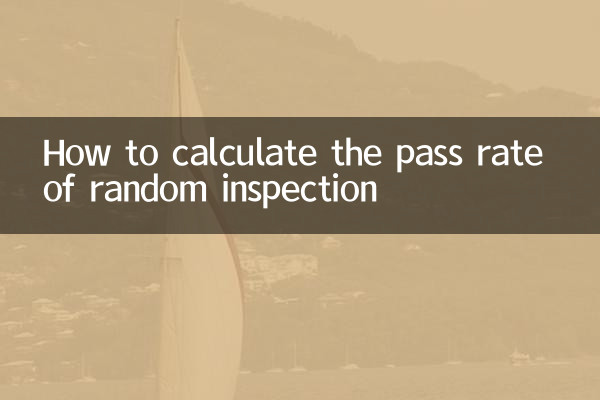How to calculate the pass rate of random inspection
The pass rate of random inspections is an important indicator to measure product quality, service level or compliance, and is widely used in food, medicine, manufacturing, market supervision and other fields. This article will combine popular topics and hot topics across the network for the past 10 days to structure the calculation method of the pass rate of random inspections, and attach examples to the description.
1. Basic formula for the passing rate of random inspections

The calculation formula for the pass rate of the random inspection is as follows:
| index | formula | illustrate |
|---|---|---|
| Sampling pass rate | (Number of qualified samples ÷ Total number of samples for sampling) × 100% | The results are presented in percentage form |
2. Cases of passing rate of sampling in popular fields
Based on the recent random inspection data released by the State Administration for Market Regulation, the National Health Commission, etc., the following typical cases are compiled:
| field | Total number of samples for sampling | Number of qualified samples | Pass rate | Source of data |
|---|---|---|---|---|
| Food Safety (Dairy Products) | 1200 batches | 1188 batches | 99.0% | State Administration for Market Regulation (July 2024) |
| Medical devices | 500 batches | 485 batches | 97.0% | National Medical Products Administration (July 2024) |
| Quality of e-commerce products | 3000 pieces | 2790 pieces | 93.0% | Consumer Association (July 2024) |
3. Detailed explanation of calculation steps
Taking dairy sampling as an example:
4. Key factors affecting the pass rate
| factor | The degree of impact | Improvement measures |
|---|---|---|
| Production standards implementation | high | Strengthen internal control training for enterprises |
| Raw material quality | high | Create a supplier blacklist |
| Detection method accuracy | middle | Update laboratory equipment |
5. Extended application of pass rate
1.Horizontal comparison: Comparison of the pass rate differences between different enterprises, regions and time periods;
2.Risk warning: A special investigation is required to be initiated if the pass rate has been continuously reduced;
3.Policy Development: If the pass rate of a certain type of food is less than 90%, the national standards may be revised.
6. Things to note
• The samples must be random and representative to avoid artificial screening;
• The detection standards must be unified, otherwise the data will have no meaning in comparison;
• When publishing data, the scope of random inspection, the inspection items and the basis for judgment should be indicated.
Through the above structured analysis, it can be seen that the pass rate of sampling inspection is not only a quantitative management tool, but also a barometer of consumer rights protection. Among topics such as pre-made dishes and internet celebrity foods that have been hotly discussed recently, the pass rate data has become the focus of public attention. It is recommended that enterprises conduct regular self-inspections to improve the pass rate level.

check the details

check the details